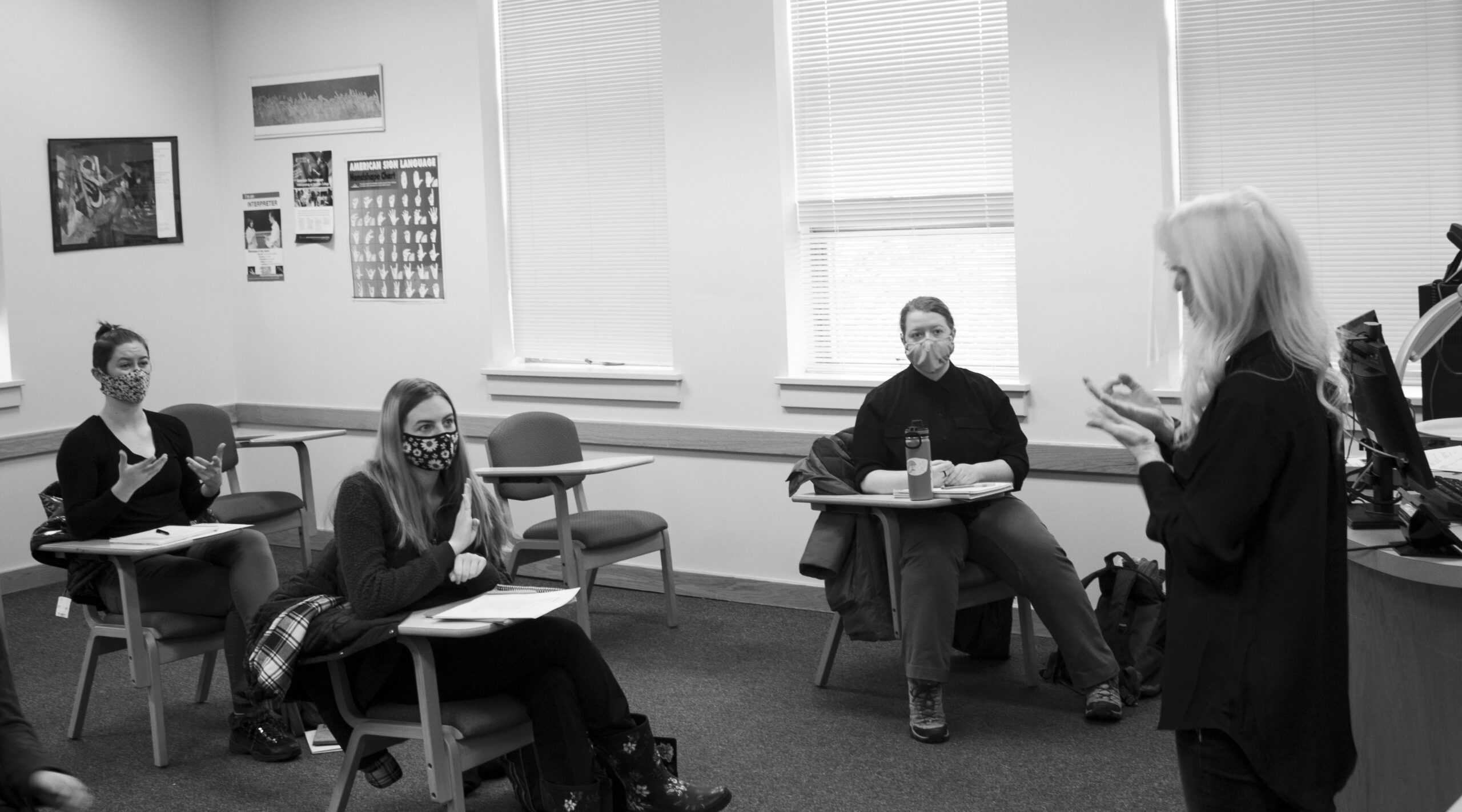Last week, Goshen College faculty voted to introduce a Transition to Interpreting program for those with a background in American Sign Language (ASL) and a bachelor’s degree, but who may not be licensed to interpret. The program is set to be implemented in the fall.
This new program is a direct response to the lack of licensed ASL interpreters.“There’s a national shortage of interpreters,” Colleen Geier, ASL program director and professor of ASL interpreting said. “Hopefully, people are going to be able to do it, and … people can make the change to the career that they want to make and provide more interpreters for the community.”
Geier explained that the program began being designed six years ago as a means to earn a certificate, but, in its final state, it is more similar to the education department’s Transition to Teaching program.
“Somebody who already has a bachelor’s degree can come back to school, train, and learn how to be an interpreter,” Geier said, “but it’s not an actual certificate program.”
Both Geier and Ann Vendrely, vice president of academic affairs and academic dean, expressed that Goshen College is a good fit for this program.
“We have a special relationship with teacher education and the ability to provide this license to people that no other schools have,” Vendrely said. “We already have all these courses, so if we can offer them to a wider range of students, that will help us and the people who are looking for this designation as a license. It fits pretty well with what we’re already doing.”
The approval process is intricate, hence the six years the program took to complete. Vendrely explained each step that goes into creating such a program.
“It goes through a series of different faculty groups … goes to all the teaching faculty, they read the proposal [and] ask questions to the person who submitted it,” Vendrely said. “It means there were other people providing feedback and making the proposal better and better. It is very constructive that way.”
Goshen College’s current curriculum for American Sign Language would fit the new program without much modification.
“It’s designed to be three semesters,” Geier said. “They’ll take most of the classes that undergrads take … it’s hard to do at an adult shorter-term program.”
Two of the three semesters will be full-time and the third part-time.
“There’s a couple of classes we’re not asking them to take, but they can take it like an elective,” Geier said.
According to Geier, students in the Transition to Interpreting, “would just fold right into existing classes.”
Because the program will be using existing staff and course, the costs of adding the program are minimal. Both Geier and Vendrely agreed that the need for ASL interpreters outweighs the cost of implementing the program.
“The only course that has to be revised and offered at a different time for these new students is the practicum [and] it isn’t very expensive for the college to provide supervision for this course,” Vendrely said. “It does appear to be worth the investment.”



